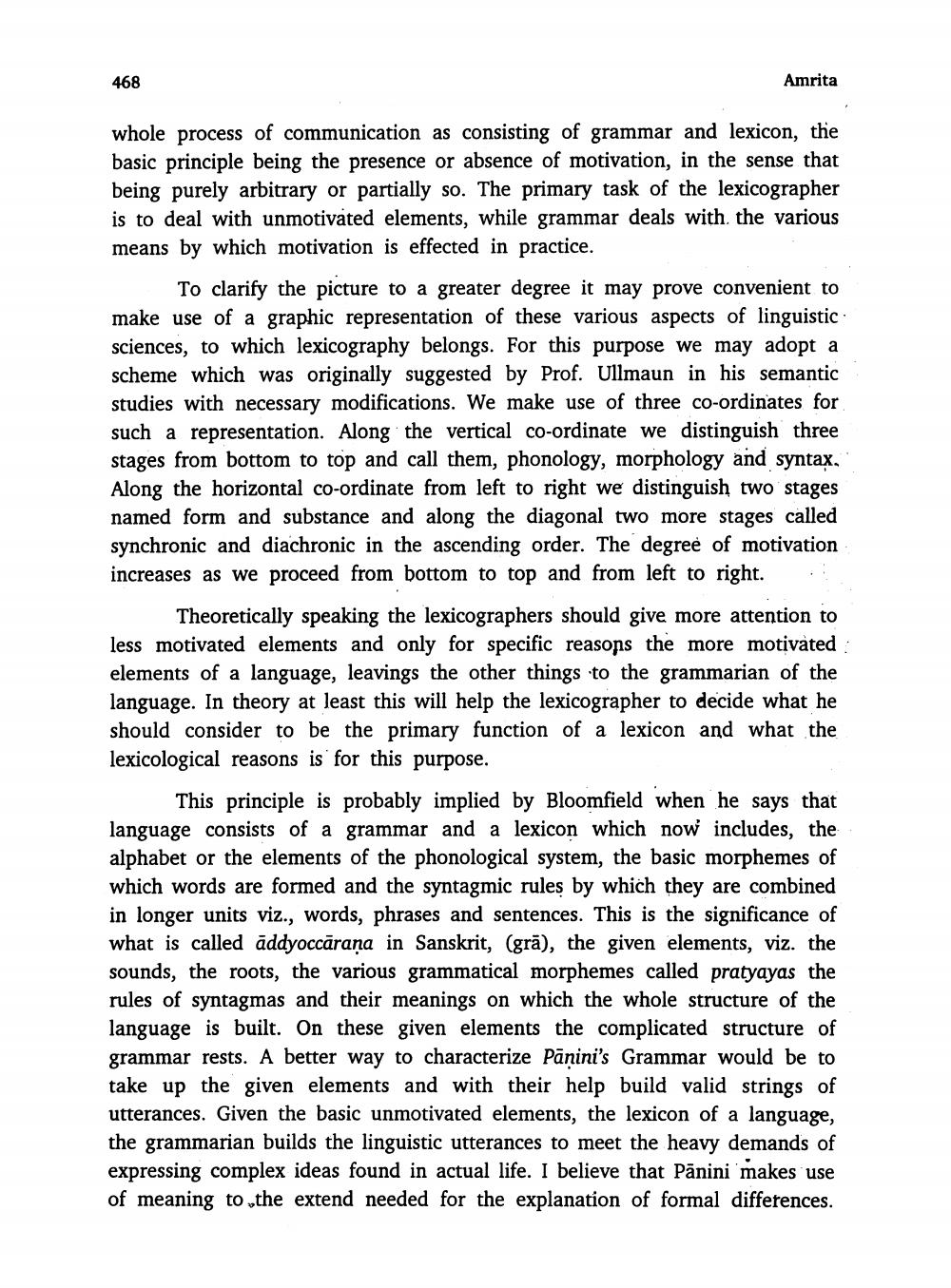________________
468
Amrita
whole process of communication as consisting of grammar and lexicon, the basic principle being the presence or absence of motivation, in the sense that being purely arbitrary or partially so. The primary task of the lexicographer is to deal with unmotivated elements, while grammar deals with the various means by which motivation is effected in practice.
To clarify the picture to a greater degree it may prove convenient to make use of a graphic representation of these various aspects of linguistic sciences, to which lexicography belongs. For this purpose we may adopt a scheme which was originally suggested by Prof. Ullmaun in his semantic studies with necessary modifications. We make use of three co-ordinates for such a representation. Along the vertical co-ordinate we distinguish three stages from bottom to top and call them, phonology, morphology and syntax, Along the horizontal co-ordinate from left to right we distinguish two stages named form and substance and along the diagonal two more stages called synchronic and diachronic in the ascending order. The degree of motivation increases as we proceed from bottom to top and from left to right.
Theoretically speaking the lexicographers should give more attention to motivated elements and only for specific reasons the more motivated elements of a language, leavings the other things to the grammarian of the language. In theory at least this will help the lexicographer to decide what he should consider to be the primary function of a lexicon and what the lexicological reasons is for this purpose.
This principle is probably implied by Bloomfield when he says that language consists of a grammar and a lexicon which now includes, the alphabet or the elements of the phonological system, the basic morphemes of which words are formed and the syntagmic rules by which they are combined in longer units viz., words, phrases and sentences. This is the significance of what is called addyoccāraṇa in Sanskrit, (grā), the given elements, viz. the sounds, the roots, the various grammatical morphemes called pratyayas the rules of syntagmas and their meanings on which the whole structure of the language is built. On these given elements the complicated structure of grammar rests. A better way to characterize Pāņini's Grammar would be to take up the given elements and with their help build valid strings of utterances. Given the basic unmotivated elements, the lexicon of a language, the grammarian builds the linguistic utterances to meet the heavy demands of expressing complex ideas found in actual life. I believe that Panini makes use of meaning to the extend needed for the explanation of formal differences.




